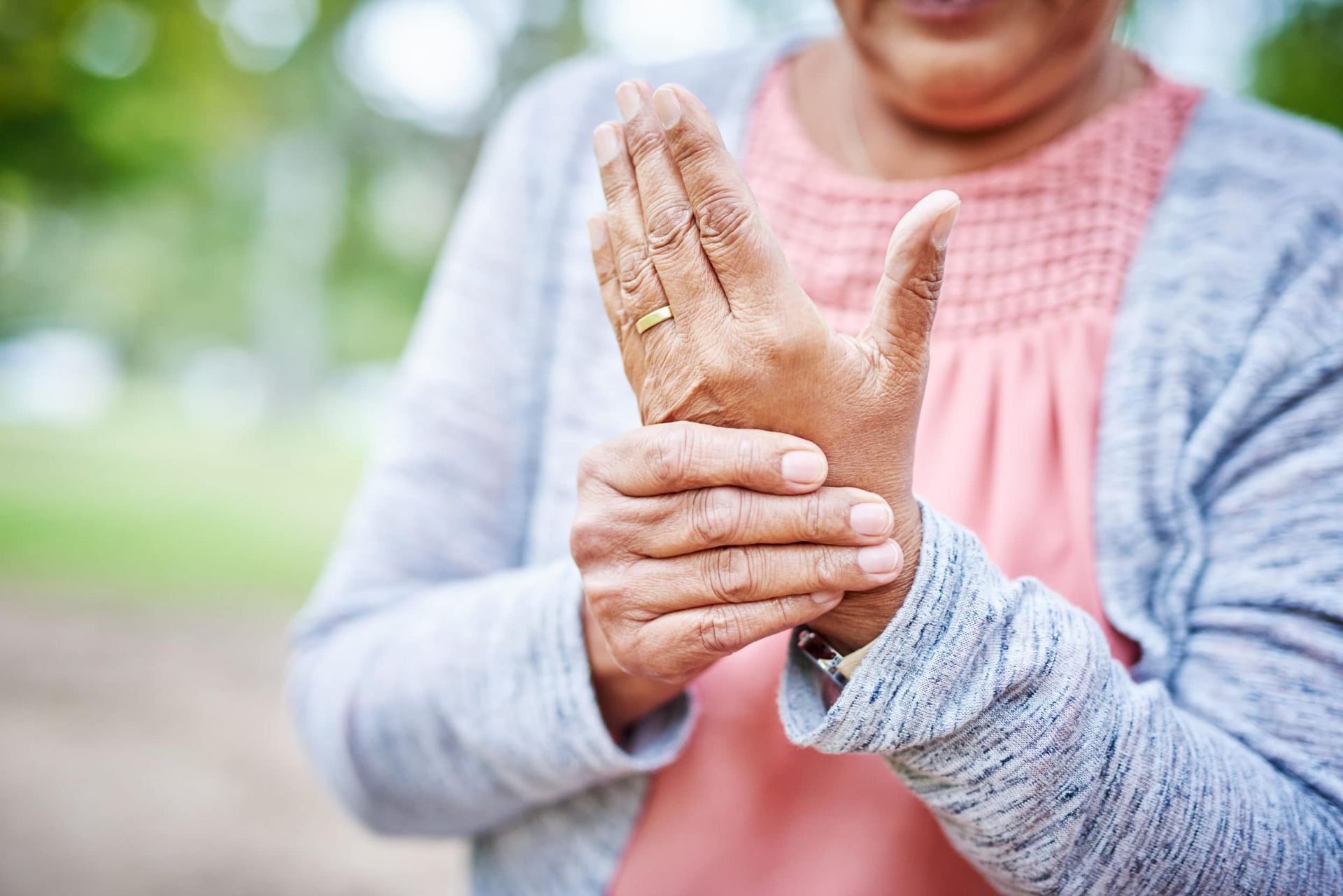Arthritis
Arthritis
Many conditions require specialized care that revolves around symptom management. Arthritis is one of the most common medical conditions that provoke chronic pain. We are proud to offer patients the variety of services they need to ensure their comfort can be improved.
What is Arthritis?
Arthritis is the tenderness and swelling of the joints. Only one joint may develop arthritis, or several joints may be affected. There are a few different types of arthritis that are commonly diagnosed, including rheumatoid arthritis, which is an autoimmune condition, and osteoarthritis, a condition in which the cartilage that helps joints move becomes excessively worn. Gout is also considered an arthritic condition. This problem occurs due to a buildup of uric acid.

What Are the Symptoms of Arthritis?
Arthritis is typically characterized by symptoms including:
- Joint pain
- Stiffness and swelling in the joint
- Redness around the inflamed joint
- Decreased range of motion in the body part of the affected joint
What Are the Risk Factors of Arthritis?
Risk factors for arthritis include:
- Age. Studies show that older people are more likely to develop osteoarthritis and gout.
- Family history. Some types of arthritis may affect many people in the same family. If parents or siblings have a kind of arthritis, the risk for that condition is increased because genes make us more susceptible to triggers in the environment.
- Studies suggest that men are more prone to gout, while women are more susceptible to rheumatoid arthritis.
- Joint injuries can cause minute damage that eventually causes the joint to wear down more quickly, leading to osteoarthritis.
- Obesity places stress on the joints, particularly in the spine, hips, and lower body. This increases the risk of arthritis.

How is Arthritis Diagnosed?
Doctors perform a physical examination in which the joints are evaluated for redness, warmth, and swelling. The patient may be asked to move the joints to observe how much range of motion there is and how well the joints move. Depending on the case, the doctor may order laboratory tests or imaging. C
ommon forms of imaging for arthritis include:
- X-rays. This diagnostic imaging can identify bone damage, bone spurs, and cartilage loss.
- CT scan imaging uses computerized tomography to observe bone and surrounding soft tissues.
- Ultrasound may be used to evaluate the cartilage and the bursae, fluid-filled sacs near the joints.
- MRI imaging uses magnetic resonance to view cartilage, tendons, and ligaments.

What Are the Pain Management Options for Arthritis?
Traditional forms of therapy for arthritis have included:
- Medication. Various pharmaceutical drugs may be considered to manage the symptoms of arthritis. These range from anti-inflammatory medications to pain-relieving analgesics to immunosuppressants.
- Physical therapy. Prescribed physical exercises assist with blood flow to the injured joint. They also strengthen muscles around the joint.
- Surgery. Severe degradation of a joint may require replacement surgery. This is often considered for badly damaged hips and knees. In other arthritic joints, such as in the hands or the spine, a doctor may suggest fusion surgery.
Pain management techniques are rapidly evolving in recent years. At the Art of Pain Management, patients may find relief from joint pain caused by arthritis using repair agents that naturally exist in the body. Examples include injections of platelet-rich plasma (PRP) and stem cell therapy. These substances contain powerful chemicals and growth factors that have been shown to decrease inflammation. Furthermore, the insertion of growth factors and stem cells into damaged joints may stimulate the natural process of tissue regeneration.
Can Exercise Improve or Aggravate Arthritis?
Patients with arthritis are encouraged to exercise regularly. Movement not only increases flexibility and strength but it can also help reduce joint pain by optimizing blood flow through damaged tissues. While patients should take care not to overexert themselves, studies have shown that lack of exercise could lead to increased stiffness and discomfort in arthritic joints. It is important to talk to your doctor or physical therapist about the types of exercises that may fit well into your particular treatment plan to avoid unnecessary aggravation to the joint.
Schedule a Consultation
Arthritis can be well managed with a comprehensive treatment plan. To learn more about the services available in our Philadelphia and Upper Darby offices, call 215-375-7107.

